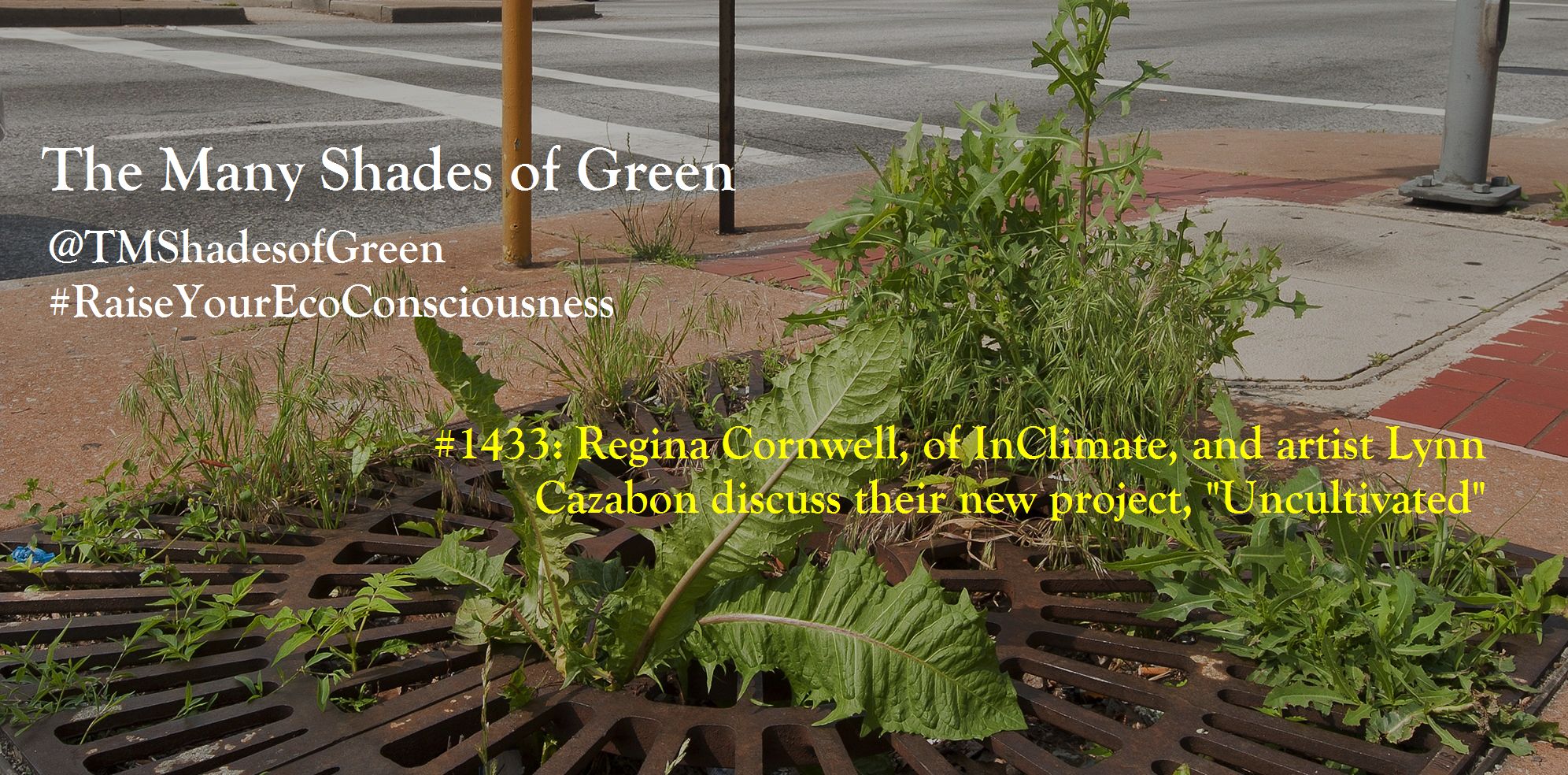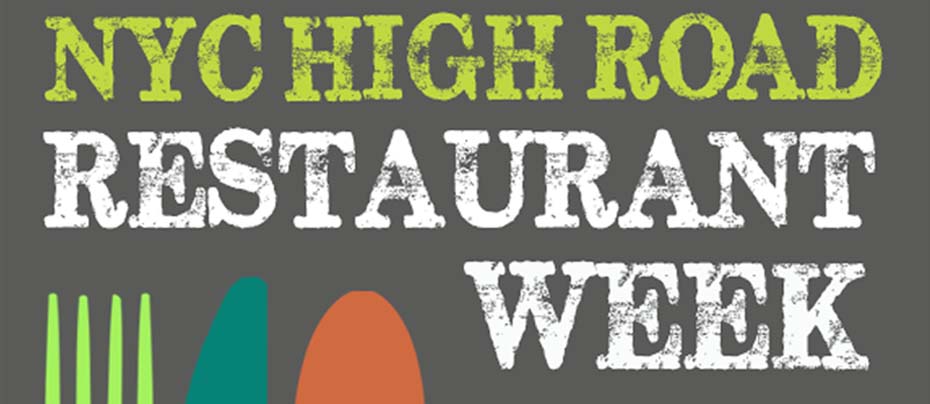2021 IS HERE, AND GOOD RIDDANCE TO 2020. WE ARE STILL IN COVID TIMES, SO WHAT WE EAT TO BUILD OUR IMMUNITY IS IMPORTANT. A GOOD PLACE TO START IS WITH THE TOPIC OF FUNCTIONAL FOODS. WE NEED TO THINK OF FOODS AND DIETS THAT HAVE A PURPOSE, AND THEREFORE SHOULD PAY ATTENTION TO WHAT FOODS GIVE US BETTER IMMUNITY. MY MOM WOULD ALWAYS SAY “EAT YOUR VEGGIES AND DRINK YOUR FRESH ORANGE JUICE.” SHE WAS SO RIGHT. WE MUST LOOK AT THE INGREDIENTS IN OUR FOOD, AND KNOW THE ORIGIN AND WHO IS GROWING WHAT WE EAT. SO WE NEED TO EAT FOODS WITH PURPOSE and FUNCTION. COURTNEY GIVES US IMPORTANT INFO ON FUNCTIONAL FOODS, WHAT IS GOOD FOR US, WHAT IS TRENDING. TAKE A LISTEN. FOR MORE INFO CHECK OUT @CLGWELLNESS ON INSTAGRAM AND MALCOLMPRESENTS.COM. TWEET ME @TMSHADESOFGREEN
Category: Organic
Courtney on Health, let’s bring in some Holiday Cheer with yes, immune boosting foods, plus naughty foods that are good for you, and perhaps a holiday cocktail or two…
’Tis the Season to be Jolly, even though we are gathering in smaller groups of mostly our immediate families. It’s important that we eat immunity building foods, as we are in COVID times. It is also important to have some fun, and we can eat foods that give us comfort and joy, and maybe we can even sip some holiday cocktails to get us through the shorter days and longer nights, as we follow Santa on zoom, and sit by the fireplace, or your big screen TV with a video loop of a roaring fire. Courtney talks about immune boosting foods, holiday treats (yes, chocolate!) and a fun holiday cocktail, The Poinsettia. Have a Happy, Healthy Holiday!
Deep Roots
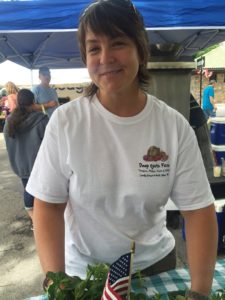 What do organic tomatoes, horn worms and Olympic figure skating legend Dick Buttons have in common? To find out, tune into this week’s show, as Allison Turcan, Stormie Velarde-Hamill and Scott O’Rourke of Deep Roots and DIG Farms, discuss what it takes to run a suburban farm. Learn about WOOFING, and no it doesn’t involve dogs howling, as well as what the difference is between organic and certified organic products. We chat about creepy, crawly and utterly gross worms which attack tomatoes and turns them truly rotten. Local farms supply the booming green markets in the NY metro tri-state area, and Scott, Allison and Stormie are not only growing amazing produce, they are working with kids, via food literacy programs, to educate them about growing delicious and healthy food. For more info go to facebook.com/DIGFarm
What do organic tomatoes, horn worms and Olympic figure skating legend Dick Buttons have in common? To find out, tune into this week’s show, as Allison Turcan, Stormie Velarde-Hamill and Scott O’Rourke of Deep Roots and DIG Farms, discuss what it takes to run a suburban farm. Learn about WOOFING, and no it doesn’t involve dogs howling, as well as what the difference is between organic and certified organic products. We chat about creepy, crawly and utterly gross worms which attack tomatoes and turns them truly rotten. Local farms supply the booming green markets in the NY metro tri-state area, and Scott, Allison and Stormie are not only growing amazing produce, they are working with kids, via food literacy programs, to educate them about growing delicious and healthy food. For more info go to facebook.com/DIGFarm
[soundcloud url=”https://api.soundcloud.com/tracks/277370184″ params=”color=ff5500&auto_play=false&hide_related=false&show_comments=true&show_user=true&show_reposts=false” width=”100%” height=”166″ iframe=”true” /]
Women Farmers Turn Over the Land with Success
By Susan Lutz
The roles of farmers often seem to go to men. Perhaps rooting from generations of roll assignments – the men work the land, the women raise the children and support their husbands. My family’s roots stretch back to farming. I remember the stories of my grandmothers supporting their husbands, doing the chores, and feeding the family and the extra farm hands. Without these women, the farms wouldn’t run. As times change, the farm is changing, too.
Organic lifestyles are creating demands for less pesticides, more local crops, and food grown without GMOs. Farms used to rely on the next generation of children, usually the son, to step up and take over. As large corporations took over acres, they created a mass production and marketing system and small farms couldn’t compete. We watched family farms collapse in the ’80s. Today, women are finding ways to farm with new insight and success.
The US Department of Agriculture reports that, beginning in the 1980s, women farmers were the “fastest-growing sector of the country’s changing agricultural landscape” and they will continue to be well into the next 25 years. The number continues to rise and women farmers are gaining visibility. The economic challenge for farmers has shifted from the tradition of turning the farm over to their children, especially to the boys, to the unknown. Many families turn away from the farm for work, but today more girls and women are choosing to stay. Some enter farming for reasons such as wanting to raise children in the rural lifestyle while others may see it as a profitable way to live. Some simply want to promote organic living. Some women choose sustainable farming and some undertake a larger scale.
Where does a woman, either working alone or with a partner, turn for resources? The growing number of women farmers has created new opportunities in education, management, production, and financial resources. The Internet, blogging, and social media have opened up a new avenue of community to women farmers. With a quick click, any woman can look up how to attack a cucumber beetle without pesticides or when the best time to plant a certain crop is, and they can share stories and develop friendships with other farmers.
Women are taking back the earth. Not from men, but together as partners. My grandmother and grandfather left the farm even before the economy suffered. Over time they gravitated closer to factories and industries offering steady pay. I wonder, if the resources today were available to them, would they have had a chance to grow their farm and adapt with help rather than flee in the hopes of just staying alive and making ends meet. The organic movement is so important to so many women I know. One farm at a time, we may see the land and its caretakers turn over a whole new leaf.
The Fight for Food: Who’s Got the Right?
By Susan Lutz
We change all the time. We adapt and learn to survive in new ways. When it comes to food, we fight for the right to know what’s in it, eat organic, and buy local. Often these steps all seem logical. We must continue to move forward and build a better food-making machine.
Enter the GMO. Are they good for us? Bad for us? Huge corporations say they are not only fine but needed. How can GMOs be good for us? While sipping my organic, fair trade coffee one morning I saw a report on CBS Sunday Morning about GMOs, examining both sides. I have to admit, after seeing the papaya grower’s woes about a bug that wiped out all of their crops, I could understand why the farmer chose to use GMO seeds to grow a new papaya that was bug-resistant. Both sides gave logical reasons as to why we should allow or ban GMOs.
It’s easy to say something is “all bad”. McDonald’s, for example, encompasses many things I deplore. Yet, I’ve eaten there. I took my kids to the indoor play areas when I lived in a country that either didn’t have parks for kids or had parks that were too dangerous to play in. Did I understand that I was being “sold” a brand in hopes that not only I but also my children would remember those golden arches for a lifetime? Yes. (My son still points to any McDonald’s we pass and asks to play there years after he’s been in one.)
Both sides have a point. The organizations that are against the corporations developing GMOs are passionate about stopping their use. To date, about 19 European countries have banned GMOs. But what about that farmer and those dead papaya trees? He’s now farming again, profitable again. Would that happen with non-GMO techniques? Perhaps that’s the bigger question. Much research and development goes into the creation of GMOs, helping to solve difficult problems for farmers. But could there be another way?
The world moves so fast. Rather than understand all of the ramifications of choice, we sometimes move in a direction that can be narrow-minded, one that doesn’t look at the big picture. What if we had found ways to destroy bugs with other bugs? I see reports of farmers finding ways to tend crops with organic solutions. Climate change is a response to our decisions and the impact those choices place on the environment. The decision to buy fair trade coffee or not impacts the people who pick it and the communities they live in. Our decisions- the paths we choose in our oil drilling, animal breeding, crop growing, and automobile design, to name a few, lead us to where we are today.
GMOs are creeping into our crops, in such a way that soon it will be hard to find foods, especially processed foods, that are GMO-free. I know that we eat some GMO foods, even though I read my labels religiously, and when we do, I let it go because I know that we are in a process, one that will teach us to make it back to middle ground.
#1528: Green Summer Special
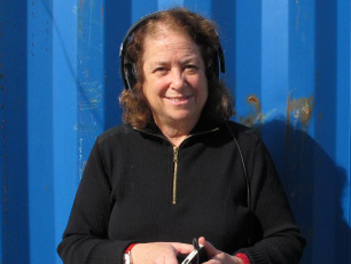 It’s summer time, which means that your inner zen takes control, and dreams of lush green forests, cool lakes, warm oceans and tropical gardens become reality. Be a sustainable citizen, consider the environment, and tool around in an electric car. While camping, keep the bugs away with natural herbal products. Join me and my guests this week, Rusti (Paula) Wolintz, realtor extraordinaire, BFF and electric car owner to be. Bonnie Rogers, expert herbalist and founder of Bonnie’s Herbals, and Brian Horowitz, my co-host today, who is the host of The Rock and Roll History Show. Our discussion takes us from consumer concerns about plug-in vehicles to how lavender can keep mosquitos away. For more information, go to bonniesherbals.com, electric-vehiclenews.com, and rvvagabond.com.
It’s summer time, which means that your inner zen takes control, and dreams of lush green forests, cool lakes, warm oceans and tropical gardens become reality. Be a sustainable citizen, consider the environment, and tool around in an electric car. While camping, keep the bugs away with natural herbal products. Join me and my guests this week, Rusti (Paula) Wolintz, realtor extraordinaire, BFF and electric car owner to be. Bonnie Rogers, expert herbalist and founder of Bonnie’s Herbals, and Brian Horowitz, my co-host today, who is the host of The Rock and Roll History Show. Our discussion takes us from consumer concerns about plug-in vehicles to how lavender can keep mosquitos away. For more information, go to bonniesherbals.com, electric-vehiclenews.com, and rvvagabond.com.
#1528: Green Summer Special by The Many Shades Of Green on Mixcloud
Simple Green Cleaning Ideas
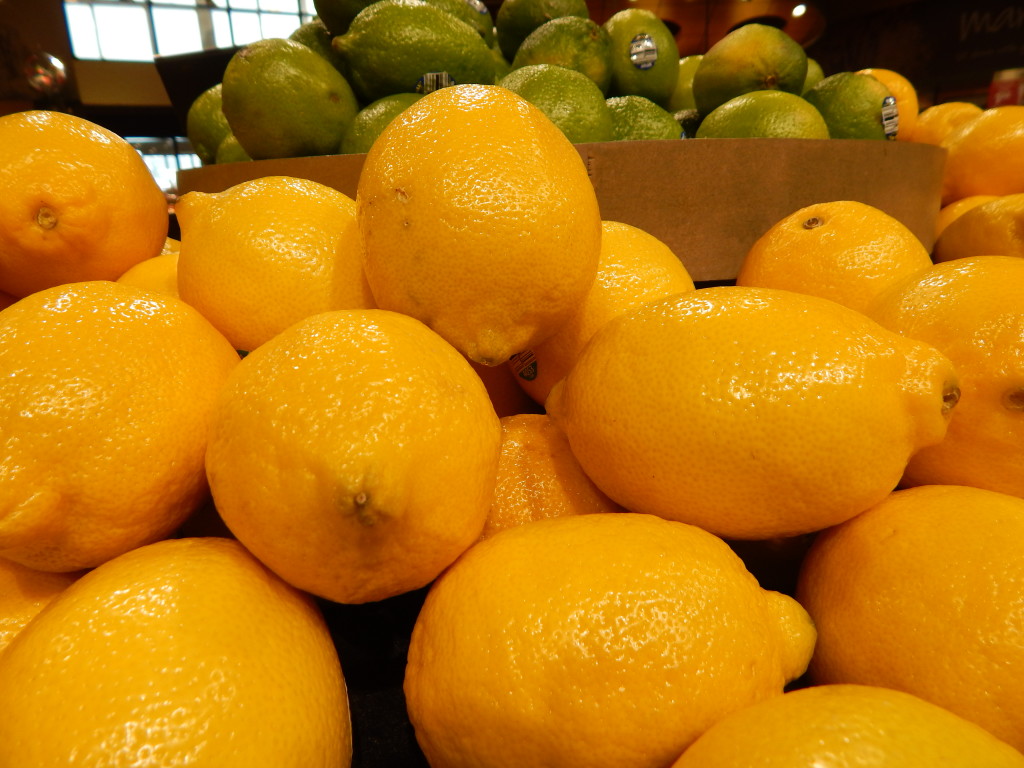 The simplest spring cleaning ideas can be found around the home. Under the sink and in the cupboard are ingredients with the power to clean easily and organically. Here are a few of my favorites:
The simplest spring cleaning ideas can be found around the home. Under the sink and in the cupboard are ingredients with the power to clean easily and organically. Here are a few of my favorites:5 Ways to Slash Your Organic Food Costs
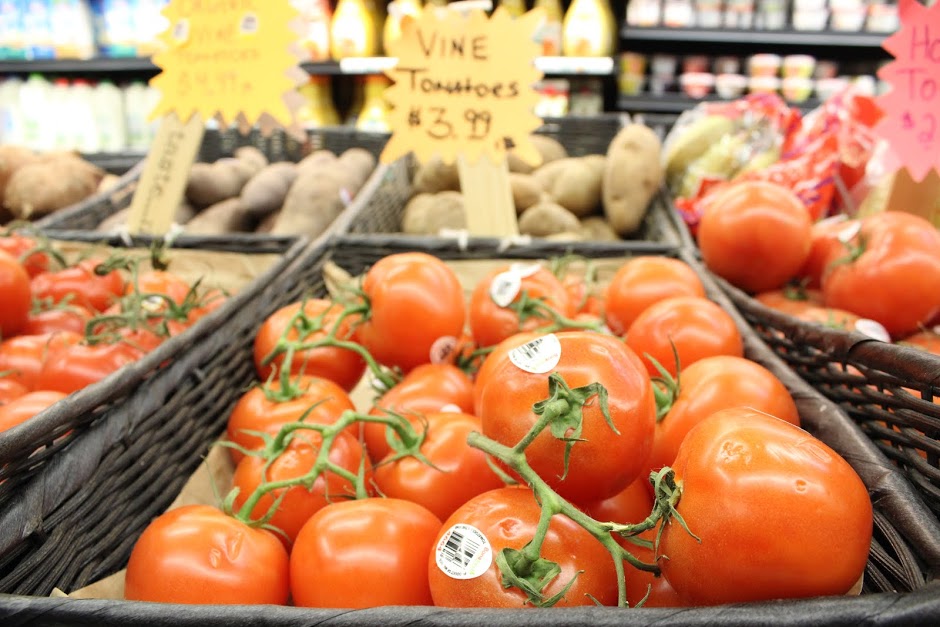
By Mikey Kohlberg
Today, I will be discussing how to cheaply feed yourself and your family without skimping on food and endangering everyone and the environment. If you have kids, you may have thought about feeding them wholesome and chemical-free food, but it is not always the cheapest or easiest lifestyle to live. However, there are cheap and easy alternatives to certain overpriced organic products. I will draw mostly from my personal experience eating budgeted organic food in order to break down some simple steps to cutting organic food costs.
1. Join a Buying Club
No, this is not only for restaurants and retail grocery stores. Individual people can pool together in order to buy wholesale organic food that is much cheaper than what you can purchase at the store. Check out UNFI’s buying club and sign up for one today. Plus, this is a great way to get to know your organic and local food eating community.
2a. DIY Organic Rice Milk
If you are lactose intolerant or just enjoy a non-dairy alternative to milk, this could help you slash your organic food expenses. For a reference point, a 32 oz. carton of Rice Dream would normally cost you around $3.22. You can easily find Lundberg’s Short Grain Brown Rice for about $2.30/lb in the bulk section of most health food stores, and this will yield much more than 32 oz. of rice milk. Believe it or not, that is pretty much all you need for quality rice milk. There are many recipes out there and I encourage you to check them out. Also, have no fear of being creative and adding new flavours or sweeteners to suit your needs. I like this recipe a lot because toasting the brown rice adds a nice touch to the end product. Enjoy!
2b. DIY Organic Tortillas
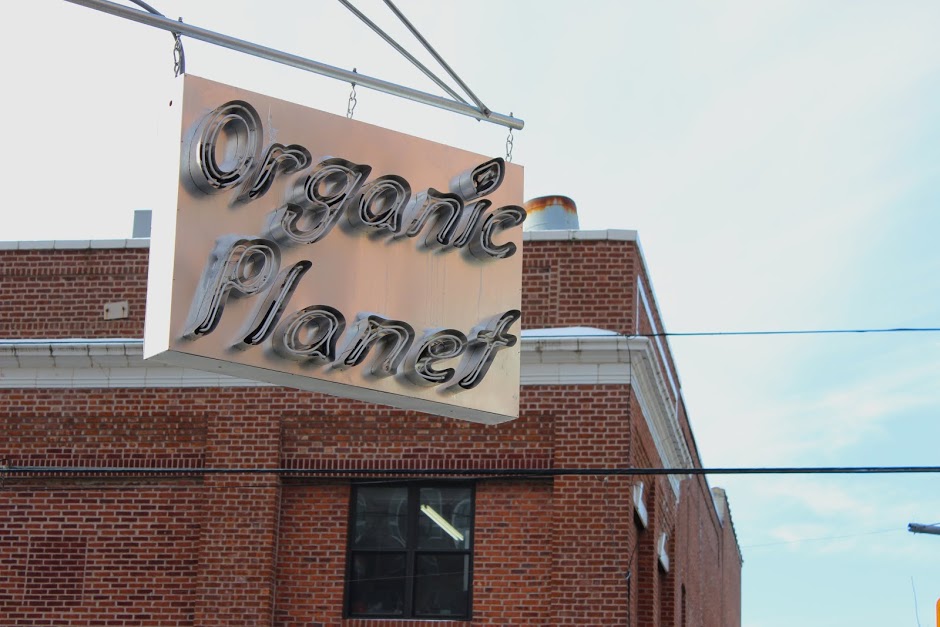
Now, if you are someone who buys packs of tortillas at a time, you may be surprised to know that you could be getting an organic version of this product for a pretty low price. Although companies like Mi Rachito have nearly perfected the art of packaged organic tortillas for around $3.00/bag, each containing around 7-12 tortillas, nothing beats the price and flavour of homemade corn tortillas. You can buy Organic Masa Harina to make your own for anywhere between $3-7.00/lb depending on purchasing quantity. One pound of masa harina will yield anywhere between 15-20 tortillas. So, if you want to impress your friends (or yourself) and make delicious, low cost organic tortillas, make your own with a recipe like this one!
3. Buy “Secondary Cuts” from Local Butcher
Instead of buying pre-cut chicken breast or thighs, save money by buying the whole carcass. It is not hard to take the extra 30 seconds to cut off the wings or breast yourself. Plus, you can explore making soups and stocks with leftover bones and undesirable parts of the animal. For Secondary red meat cuts, check out this link for more info.
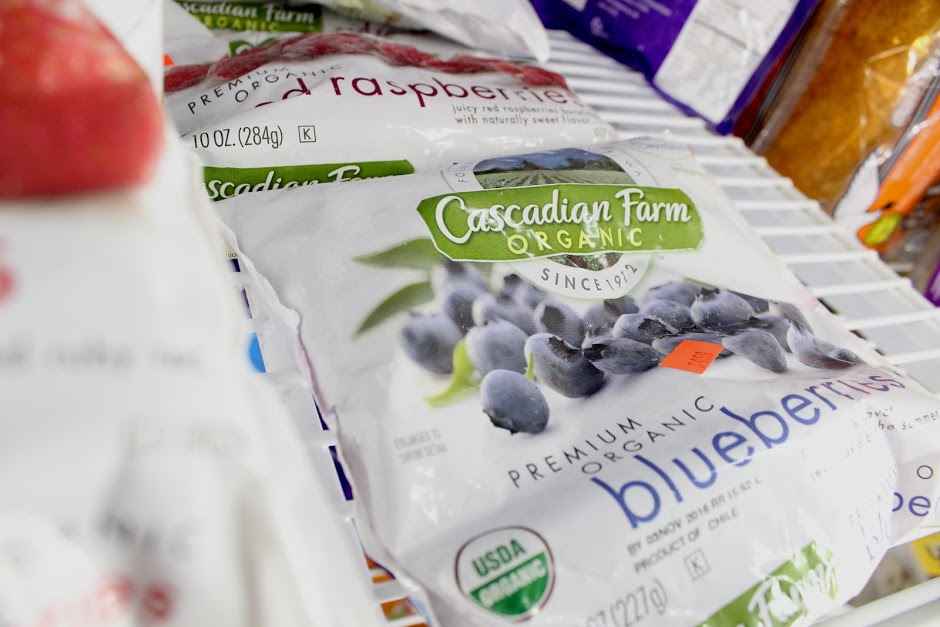
4. Use your Freezer/Pickle Things
If you have extra food that may go bad, freeze it. Also, if you have produce that might not be disgusting pickled, learn how to pickle it. It may be a fun activity for family or friends.
5. Buy in Bulk/Buy Local
This should be obvious to everyone, but I will explain it anyway. Usually, the more of something you buy, the cheaper per pound it will be, so you can save there.
Also, try to buy seasonal vegetables, nuts and fruit in bulk as well. Often times, especially in the summer, certain crops like heirloom tomatoes will be significantly cheaper than they are in the winter since they thrive in the heat and don’t have to be grown indoors or shipped across the globe to get to you. Stock up on those items while they are in season if you like saving money and eating nutritious, earth-friendly food. You can always make something out of excess seasonal food and freeze it for later or for winter.
I hope this helps some of you slash your organic food bill. If you have comments or questions, please let us know! Until next time. Stay Green!
#1501: Eating Healthy Made Easy
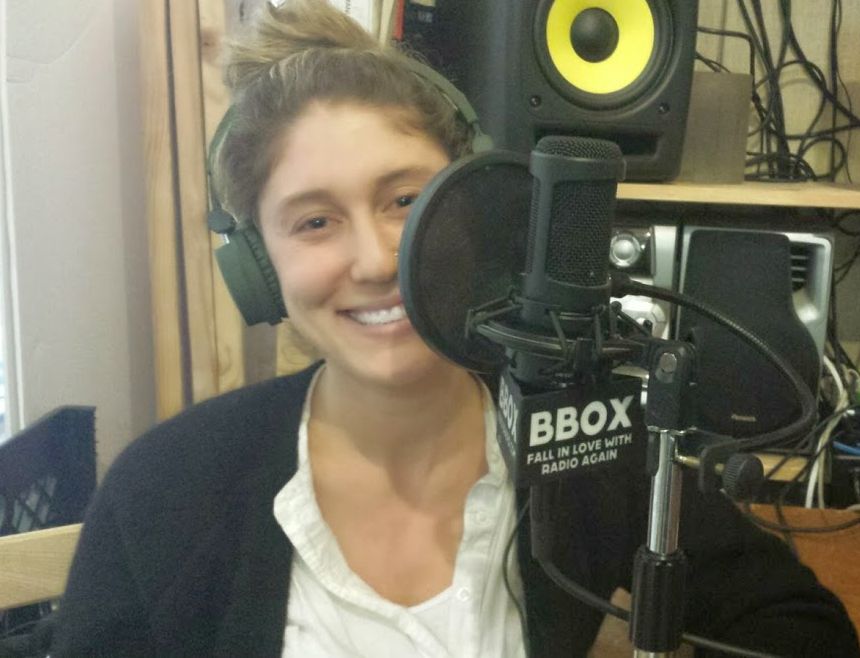 When your mom yelled “eat your veggies” she was definitely on to something. My guest this week is Ashley Spivak, Director of Restaurant Guides at Clean Plates. We discuss the importance of a well balanced, plant based eating regimen, that will lead to a healthier you. An 80/20 diet of 80% good stuff (vegetables, fruits, whole grains and protein), and 20% of the foods that make you smile (pie, cookies, mac and cheese) is a good formula to follow. Bio-individuality indicates that there is no right way to eat, not every person is the same, and diets and food choices affect different body types in different ways. The Clean Plates Food Guide lists restaurants that are more conscious about where they source their produce, meats, grains, as well as the taste of the food, the prep and the atmosphere. Making informed choices whether eating out or in is essential to being a healthier, smarter and cleaner eater. For more info about Clean Plates online publications, guides, phone apps and recipes, go to cleanplates.com
When your mom yelled “eat your veggies” she was definitely on to something. My guest this week is Ashley Spivak, Director of Restaurant Guides at Clean Plates. We discuss the importance of a well balanced, plant based eating regimen, that will lead to a healthier you. An 80/20 diet of 80% good stuff (vegetables, fruits, whole grains and protein), and 20% of the foods that make you smile (pie, cookies, mac and cheese) is a good formula to follow. Bio-individuality indicates that there is no right way to eat, not every person is the same, and diets and food choices affect different body types in different ways. The Clean Plates Food Guide lists restaurants that are more conscious about where they source their produce, meats, grains, as well as the taste of the food, the prep and the atmosphere. Making informed choices whether eating out or in is essential to being a healthier, smarter and cleaner eater. For more info about Clean Plates online publications, guides, phone apps and recipes, go to cleanplates.com
The Green Stream: Beware of US Food Politics
The need is greater than ever to be involved in the growing sustainability and food movement. The threats that our agriculture industry pose on climate change and human survival are blatantly obvious at this point, yet it seems that many US politicians have forsaken their duty as representatives of the common good of America while instead succumbing to the pressures of politics and corporate interest. For the sake of being concise, I won’t get into the details of the destruction that Monsanto Company and similar operations are causing to humanity and to nature. For a summary of these details, click here.
Today, I am focusing more on the dilemma of Michael R. Taylor slithering his way from atop multiple powerful positions working for Monsanto Company to holding America’s health in the palm of his hand as head honcho of the FDA. And last but not least, I hope to begin to show you all how gravely this affects us all.
To start off I want to ask a question. When did it become acceptable in this country to let someone switch so freely between the position of corporate lobbyist/lawyer and policy maker in the same field? That is what FDA Deputy Commissioner for Food and Veterinary Medicine Michael R.Taylor did. Also, do me a quick favor and google the relationship he has had with King & Spalding, a law firm that has a history of representing Monsanto. This, my friends has been called by Marion Nestle, who wrote Food Politics, “a classic example of the revolving door.”
There are those who argue for Taylor’s innocence however. Bill Marler who wrote Mike Taylor and the Myth of the Monsanto Man, claims that after knowing of him (not directly knowing him) for nearly 20 years, he is convinced Taylor is non-partial to Monsanto. Taylor himself is quoted in the article saying, “The government has clear rules about what a person can and cannot work on under those circumstances (potential partiality to an industry),” Marler then establishes his line that Taylor “follows those rules very carefully.” Marler continues to explain that when Taylor held the Deputy Commissioner for Policy (FDA) in the mid-’90s, the FDA Ethics Counsel said that he could work on general policy matters, such as policies for food labeling, but that he was precluded from any involvement in specific product approvals of interest to Monsanto. HOLD ON!
Seeing as one of the biggest US food policy issues right now is the requirement of food companies to label GMO foods, this seems like an issue that former Monsanto lawyer and VP of public policy at the largest GMO company in the world should not be engaging in! American health is at stake!
Also, according to PF Louis in his article Biotech industry at war over GMOs; millions of dollars funneled to lawmakers, “Monsanto Mike (Taylor) was able to influence the approval of rBGH (recombinant Bovine Growth Hormone), which forces cows to yield more milk while causing infections that require antibiotics. So many milk and other dairy products became contaminated with the synthetic hormone rBGH, antibiotics, and infected cow blood and puss.” If you are unaware of the futility that over antibiotic use in factory farms is causing modern medicine please check out some of these links. I encourage you to explore the topic in more detail.
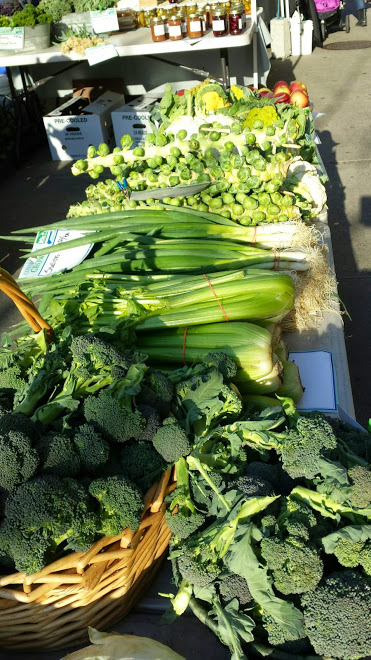 Long story short, America’s reckless agricultural techniques and lack of quality governmental oversight has created a situation in which Americans are falsely assured by their own government about the safety of their food. It is a situation that still has its solutions though. What we need is mass education which will contribute to a snowballing in consumer awareness about the importance of the local and sustainable food movement. It has started to take hold around the world but with EVERONE’S help, we will begin to change. Their have been sparks of change so far, but we need to keep the passion strong to get the fire roaring. As we eat locally and buy from small farms, food becomes much healthier, less mysterious, and more tasty. While food transportation costs and emissions are reduced, air becomes cleaner in cities and communities become stronger through community farms and other CSA projects. If you take away one thing from this blog, let it be to buy food that comes from within 100 miles of where you live!
Long story short, America’s reckless agricultural techniques and lack of quality governmental oversight has created a situation in which Americans are falsely assured by their own government about the safety of their food. It is a situation that still has its solutions though. What we need is mass education which will contribute to a snowballing in consumer awareness about the importance of the local and sustainable food movement. It has started to take hold around the world but with EVERONE’S help, we will begin to change. Their have been sparks of change so far, but we need to keep the passion strong to get the fire roaring. As we eat locally and buy from small farms, food becomes much healthier, less mysterious, and more tasty. While food transportation costs and emissions are reduced, air becomes cleaner in cities and communities become stronger through community farms and other CSA projects. If you take away one thing from this blog, let it be to buy food that comes from within 100 miles of where you live!
I want to end this Green Stream blog with a note of optimism, because although there are many problems with our current food regulatory system and agricultural sector, there is much we all can do.
Buy local and Stay Green!
Find out more info about eating clean and stayed tuned for The Many Shades of Green’s interview with Ashley Spivak from Clean Plates!
#1434: Regina Cornwell, of Inclimate, and artist Lynn Cazabon discuss “Uncultivated”
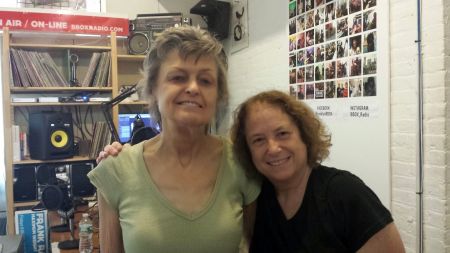
Why are weeds considered the rats of the horticultural world, and what can we do to make people think about weeds in a more positive light? Join me and my guests Regina Cornwell, Curator and organizer of inClimate, and Lynn Cazabon, artist and Associate Professor of Art at the University of Maryland, Baltimore County as we discuss the project they are currently working on called “Uncultivated.” This project connects art and science, in an effort to educate the community about the importance of the edible plants (weeds), that grow wild within the urban area of Hunts Point in the Bronx. Regina is also a Climate Change presenter for the Climate Reality Project, which was started by Al Gore as an offshoot of the film An Inconvenient Truth. For more information go to www.inclimate.org and climaterealityproject.org
#1417: High Road, NYC High Road Restaurant Week
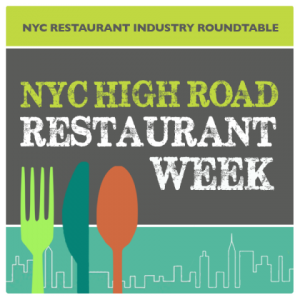 “The fight is never about grapes or lettuce…it is always about people.” That quote by Cesar Chavez describes what Colt Taylor, Executive Chef at One if By Land, Two if By Sea, and Tatiana Bejar, High Road Coordinator of the Restaurant Opportunities Center of New York, have teamed up to do, help the people, which in this case are the restaurant employees who are often times working in conditions that are not always optimal. High Road Restaurant Week, which runs from April 23rd through April 30th, aims to call attention to the the need to improve employment practices, via living wage, health benefits, sick days and overall treatment of those who work so hard to make our dining experiences more pleasurable. Sustainability doesn’t stop at the quality of food, it also connects to the human side, and restaurant workers deserve to be able to support their families and have benefits that all workers strive for. Please visit www.highroadny.org or www.rocny.org/
“The fight is never about grapes or lettuce…it is always about people.” That quote by Cesar Chavez describes what Colt Taylor, Executive Chef at One if By Land, Two if By Sea, and Tatiana Bejar, High Road Coordinator of the Restaurant Opportunities Center of New York, have teamed up to do, help the people, which in this case are the restaurant employees who are often times working in conditions that are not always optimal. High Road Restaurant Week, which runs from April 23rd through April 30th, aims to call attention to the the need to improve employment practices, via living wage, health benefits, sick days and overall treatment of those who work so hard to make our dining experiences more pleasurable. Sustainability doesn’t stop at the quality of food, it also connects to the human side, and restaurant workers deserve to be able to support their families and have benefits that all workers strive for. Please visit www.highroadny.org or www.rocny.org/

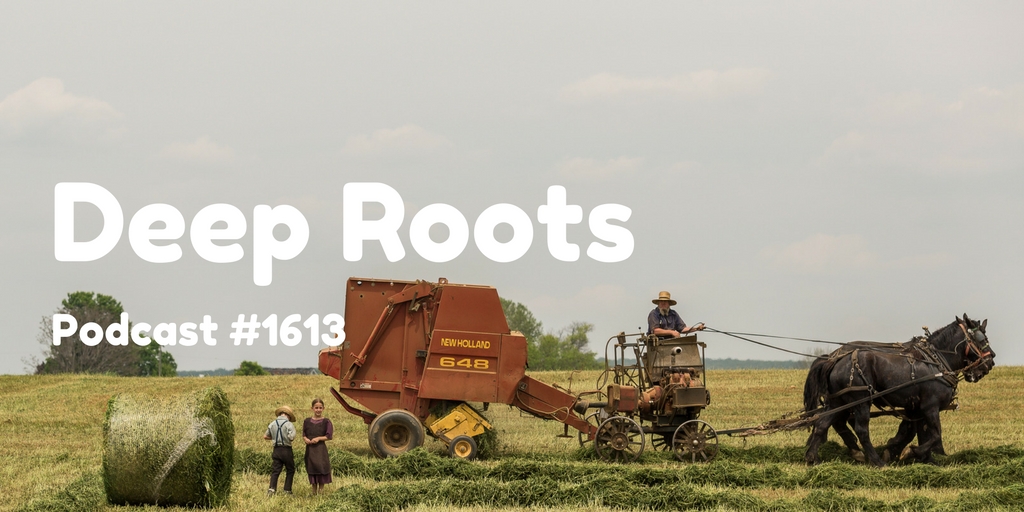
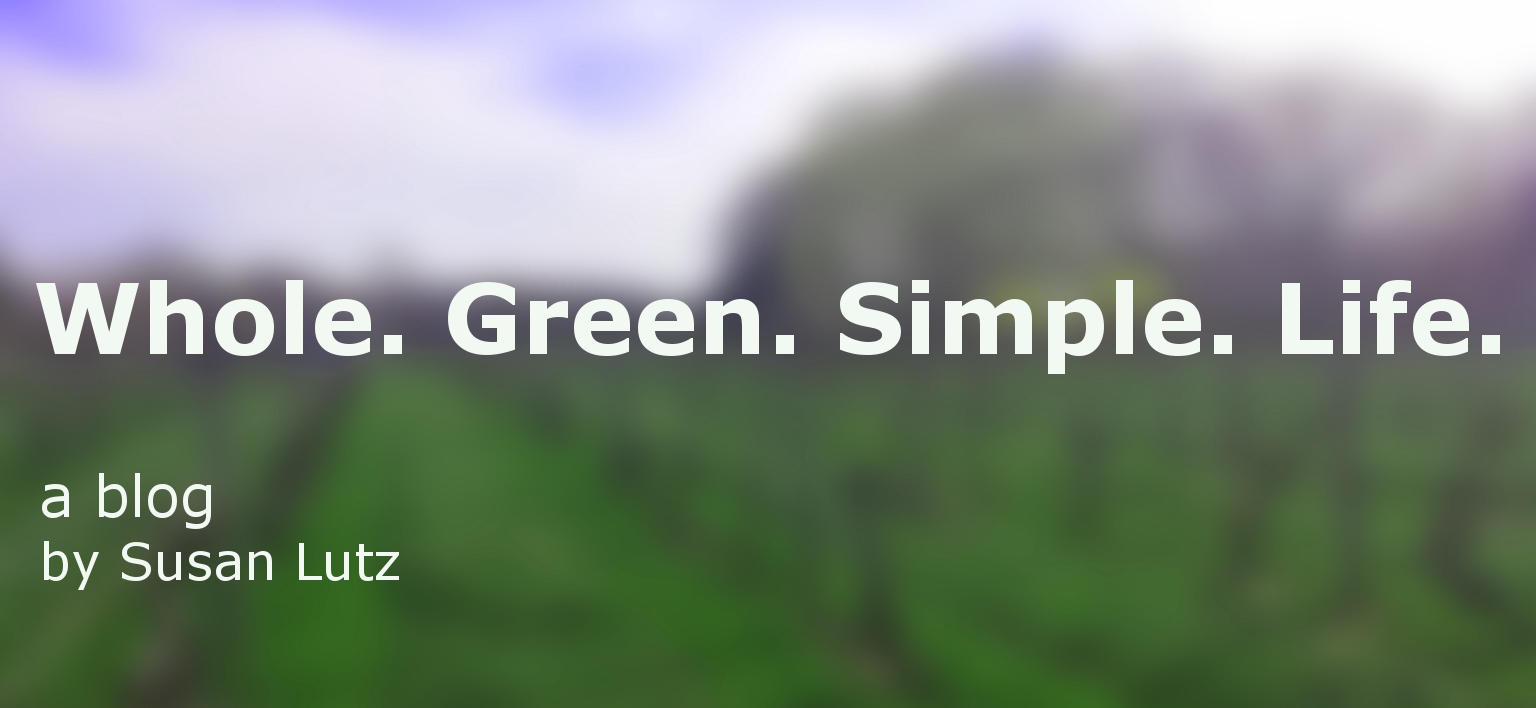

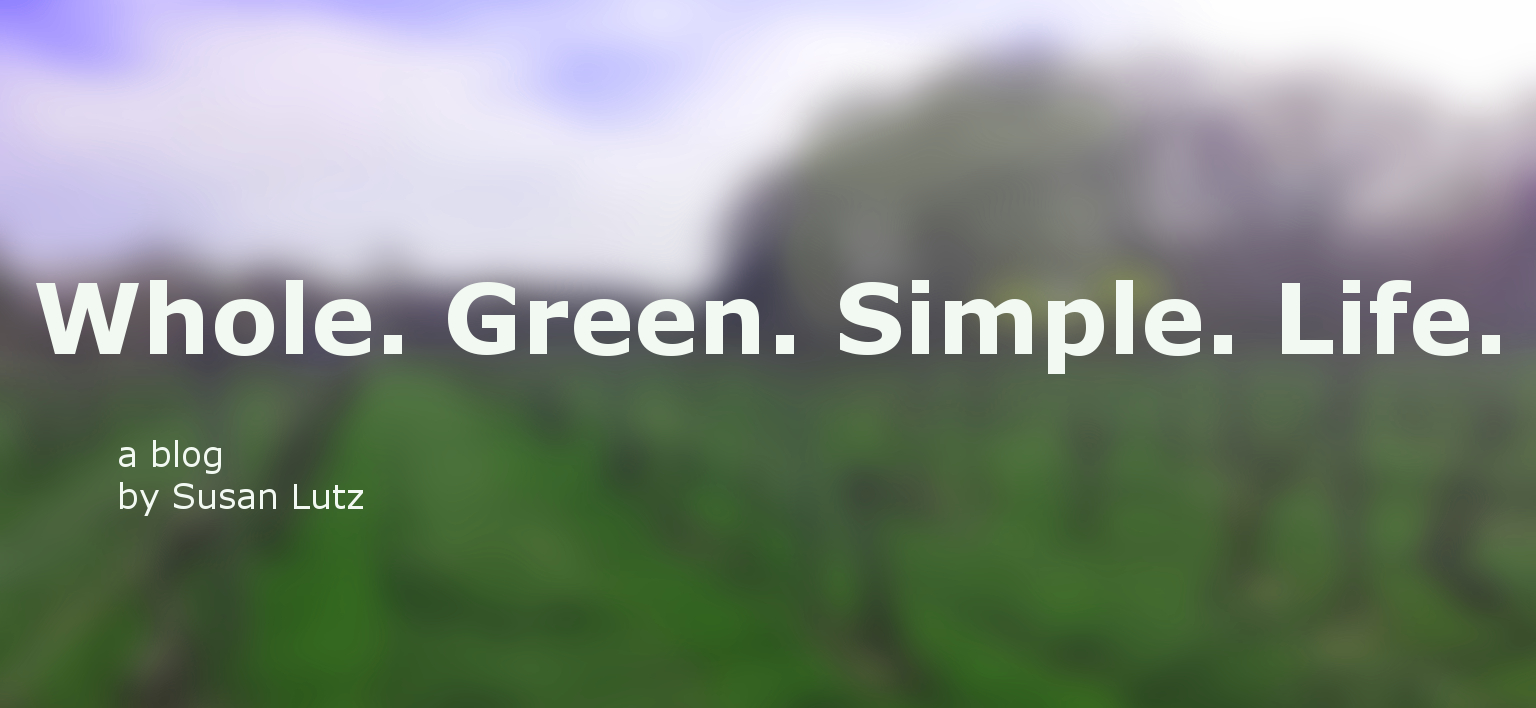
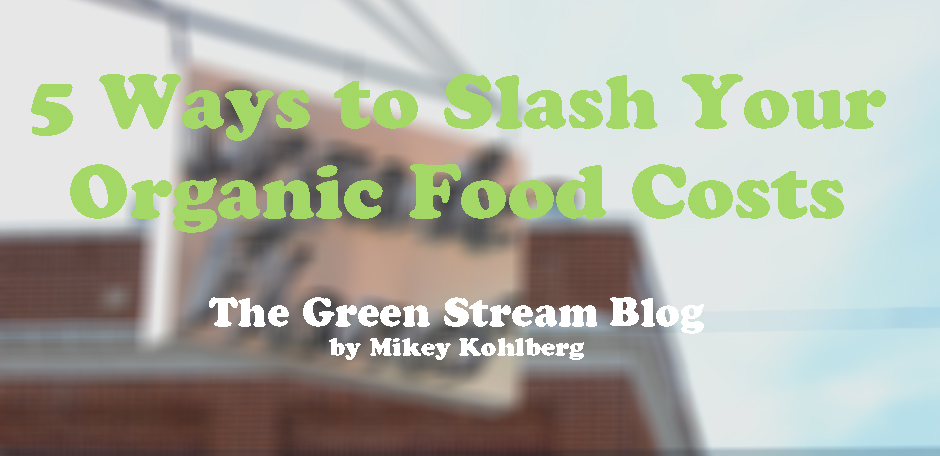


 By
By 